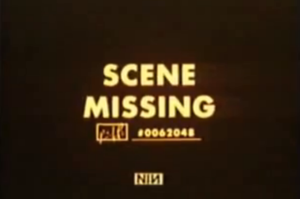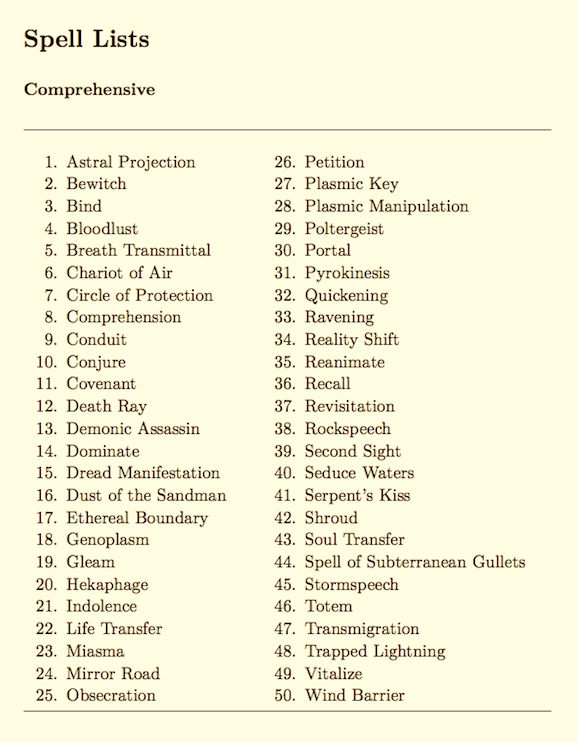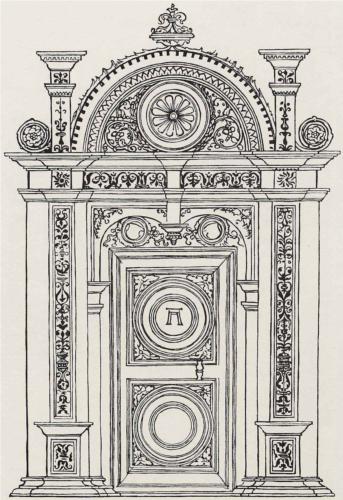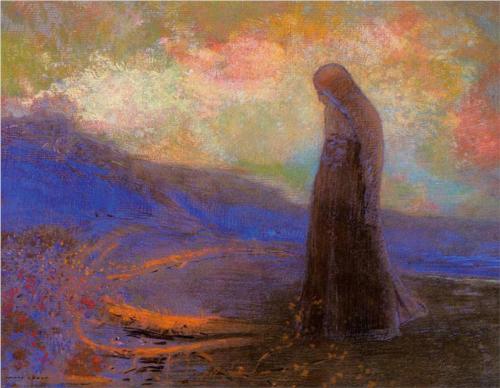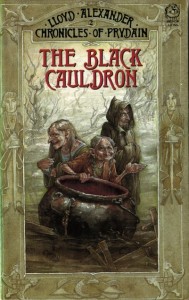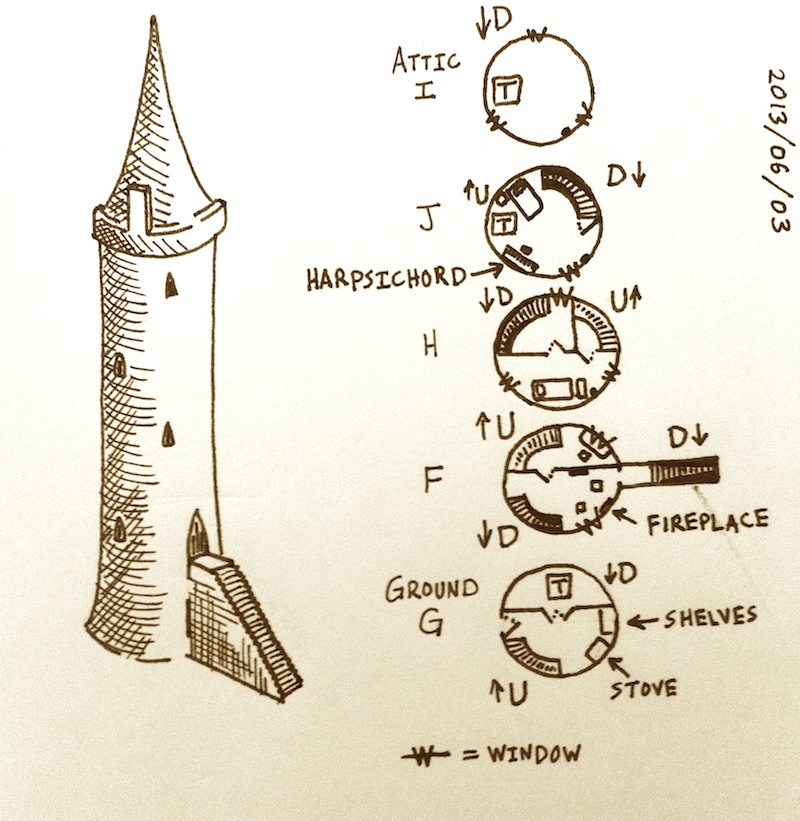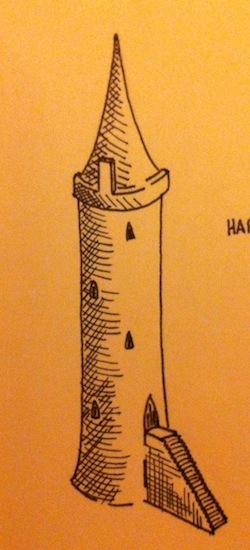I recently got the urge to read the Prydain young adult fantasy novels. I don’t know if I ever read them when I was younger, though I have fond childhood memories of the Disney animated movie (and a coloring book based on it). Looking at books like these as an adult can be hit or miss, as I found a while back when I attempted to reread the Narnia books (they didn’t hold up well at all for me). As a whole,
My favorite parts of the entire series are the descriptions of the Horned King and the cauldron-born in The Book of Three (which is volume 1 in the series). On the Horned King:
Astride the foam-spattered animal rode a monstrous figure. A crimson cloak flamed from his naked shoulders. Crimson stained his gigantic arms. Horror-stricken, Taran saw not the head of a man but the antlered head of a stag. The Horned King! Taran flung himself against an oak to escape the flying hoofs and the heaving, glistening flanks. Horse and rider swept by. The mask was a human skull; from it, the great antlers rose in cruel curves. The Horned King’s eyes blazed behind the gaping sockets of whitened bone.
On the Cauldron-Born:
“There are others to whom a sword means nothing,” Gwydion said. “Among them, the Cauldron-Born, who serve Arawn as warriors.” “Are they not men?” Taran asked. “They were, once,” replied Gwydion. “They are the dead whose bodies Arawn steals from their resting places in the long barrows. It is said he steeps them in a cauldron to give them life again—if it can be called life. Like death, they are forever silent; and their only thought is to bring others to the same bondage. “Arawn keeps them as his guards in Annuvin, for their power wanes the longer and farther they be from their master. Yet from time to time Arawn sends certain of them outside Annuvin to perform his most ruthless tasks. “These Cauldron-Born are utterly without mercy or pity,” Gwydion continued, “for Arawn has worked still greater evil upon them. He has destroyed their remembrance of themselves as living men. They have no memory of tears or laughter, of sorrow or loving kindness. Among all Arawn’s deeds, this is one of the cruelest.”
In addition to these passages, there are some enjoyable “dungeon” scenes in The Castle of Llyr (volume 3) involving an insane transmogrified alchemist stuck underground after enlarging himself with a potion (yes, that part is pretty much as good as it sounds, and reads like the transcription of a D&D adventure).
The setting and atmosphere are far more interesting than the characters or the plot. The characters can, in fact, be downright annoying. For example, the continuous exaggerations followed by broken harp strings from Fflewddur, the Jar Jar Binks antics of Gurgi, and the somewhat artificial girl-versus-boy interactions between Taran and Princess Eilonwy. It is perhaps unfair to criticize the characters of a children’s book for being childish, but, well, there it is. This is definitely not a flaw shared by many other books that arguably belong to the same genre, such as Ursula K. Le Guin’s Earthsea stories.
The fifth book shows the progression from adventurer (in Taran Wanderer, volume 4) to domain level play (in The High King, volume 5) in a way that would be interesting to see in a tabletop campaign:
While the men readied their mounts and Hevydd set his forge to blazing, Taran led the companions to the neighboring Commots. His task became quickly known and each day brought its throng of herdsmen and farmers who needed no urging to march in the growing host following the banner of the White Pig. For Taran, days and nights merged into one another. In the marshaling camps astride unflagging Melynlas he rode among the gatherings of peaceful men turned warriors, seeing to their provisions and equipment, and bv the embers of watch fires held council with the new-formed war bands.
Rather than building a stronghold and watching the soldiers arrive, have PCs rally followers against some enemy or looming threat. (Quote above is from The High King, page 109.)
The most surprising aspect of Prydain for me during this reading was the depiction of the fair folk, which I had no memory of. They are mostly magical bearded small folk that live underground, and have powers such as turning invisible. They draw far more from the legends of little people than they do from the Norse Eddas. Like mainstream fantasy dwarves, they do concern themselves with mining and the crafting of beautiful objects. Unlike the mainstream, they are quite small (this passage is from The High King, page 178):
Hevydd the Smith marveled at their axes and short swords, pronouncing them sharper and better tempered than any he could make. For their own part, the Fair Folk seemed not the least uneasy; the tallest of Eiddileg’s warriors stood barely higher than Llassar’s knee, but the Fair Folk soldiers looked on their human comrades with the friendly indulgence they might show to overgrown children.
Perhaps the true test of stories like these, the Prydain novels have made me interested in the myths that inspired them, which include the Mabinogion and Welsh Triads. Prydain, it turns out, is the old Welsh name for Britain. In the process of investigating those primary sources, I also came across Celtic Wonder Tales, By Ella Young, the full text of which is available for free on archive.org.
The books in the series are all individually very short, around 200 pages, and quick reads. There is enough mythological atmosphere to make them still worthwhile to an adult RPG player, I think, though as noted above there are aspects which may be somewhat simplistic. If you have kids, these novels would certainly make good “read aloud” candidates that you might also be able to get something from yourself.


